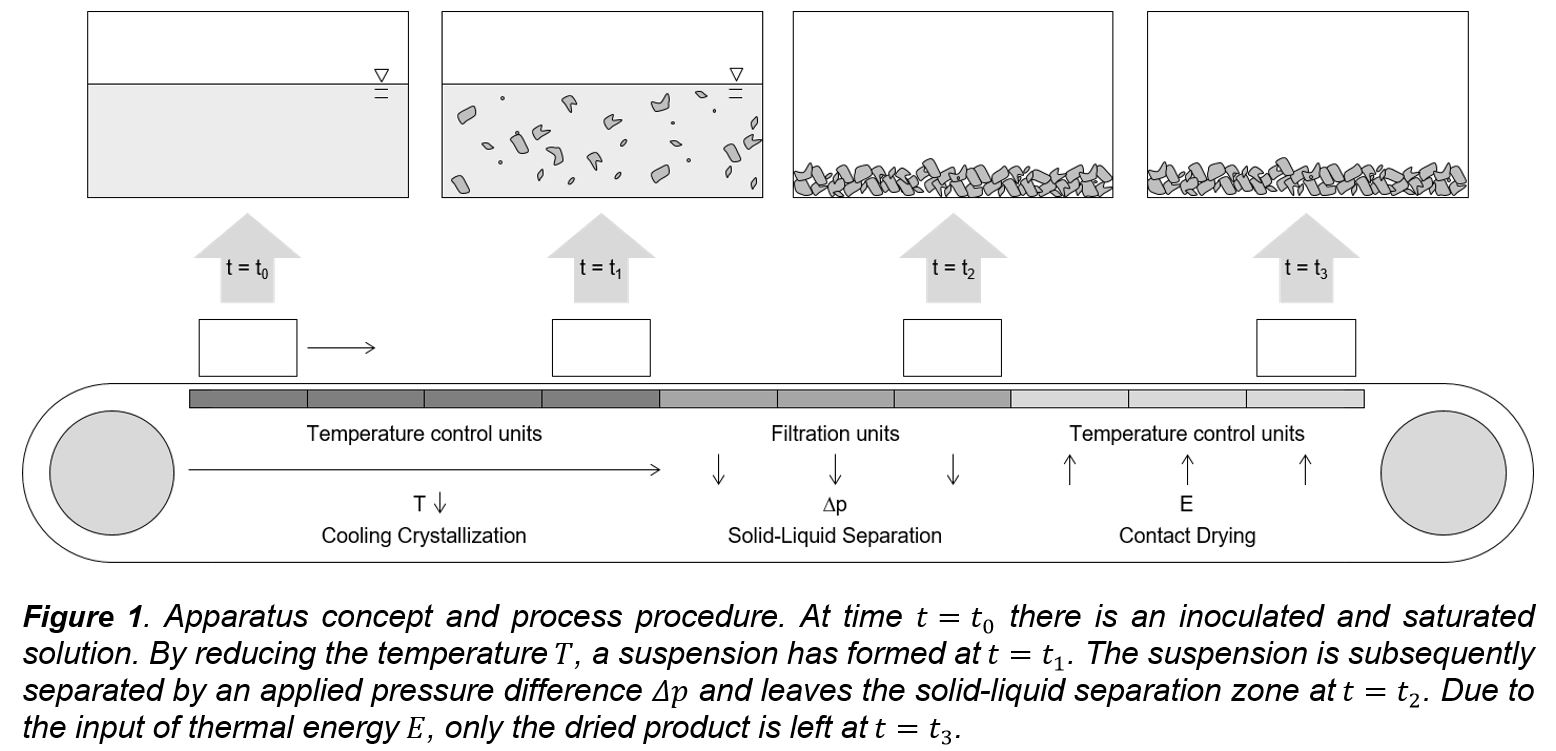In almost every industrial sector, companies are faced with constantly changing challenges. In the chemical and pharmaceutical industry, these range from increasing global competition to existing but not exhausted resource and energy saving potentials, growing market volatility, short product life cycles as well as rising quality demands and the desire for individual products in small quantities [1â3]. To meet the challenges successfully and thus ensure the long-term success of the company, innovative solutions are required. In addition to a modular and small-scale design, these include converting batch wise operation into its continuous form, increasing the degree of automation and the integration of different process steps into a single process apparatus [3, 4].
Taking these aspects into account, a novel plant concept for quasi-continuous particle synthesis and separation was developed [5]. A high degree of automation and the combination of different process steps (cooling crystallization, solid-liquid separation and contact drying) in one plant ensure significant energy and resource savings. Furthermore, an intelligent control system in combination with innovative measurement technology enables the targeted adjustment of particle properties and an increase in product quality and quantity.
The basis of the apparatus is a belt filter in which the vacuum trays below the filter medium are replaced by functional modules. While we use temperature control units in the areas of crystallization and drying, filtration segments are installed in the solid-liquid separation section. The individual functional modules can be arranged in any order, which in turn ensures a high degree of plant flexibility and makes it possible to adapt quickly to new material systems or changing customer requirements. The particle formation and separation takes place above the filter medium. To guarantee reproducible, constant process conditions and at the same time to avoid leakage of the suspension during crystallization, the whole operation is performed in zones separated from each other passing through the process chain from left to right. At the end of the belt section, the dried value product is removed from the filter. Figure 1 schematically shows the apparatus concept described.
In addition to developing the apparatus, the focus of the current research was on proof-of-concept and increasing the scale up to an industrial pilot system. For this purpose, tests were initially carried out on a very small laboratory scale. On the basis of the results, it was possible to demonstrate the basic functionality of the concept. Moreover, these experiments served to determine important property functions (e.g. influence of temperature control and residence time on the crystals formed or influence of crystallization on subsequent process steps), to optimize the process, to determine suitable operating parameters and to design an industrial production plant.
Within the scope of the lecture, the complete path from the initial idea to the successful commissioning of the pilot plant will be shown. This includes both the description of the basic apparatus concept and the presentation of results from the laboratory and pilot plant scale. In addition, potential savings resulting from the construction and plant design are discussed and compared with conventional processes.

